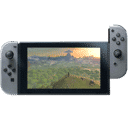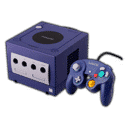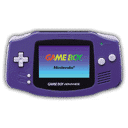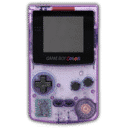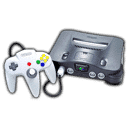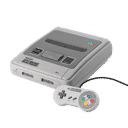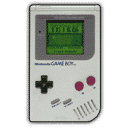
Summary:
Hyrule Warriors: Age of Imprisonment has stormed straight to the top of Japan’s latest physical sales charts, opening with 73,183 copies sold on Nintendo Switch 2 and instantly claiming the No.1 spot. Just beneath it, a familiar mix of heavyweight favorites keeps the rankings fiercely competitive: Pokemon Legends: Z-A continues to add tens of thousands of copies to an already massive lifetime total, Mario Kart World shows that Nintendo’s racing magic never slows down, and Dragon Quest I & II HD-2D Remake spreads its audience across Switch 2, Nintendo Switch, and PlayStation 5. At the same time, Nintendo’s hardware story looks almost unfair. Switch 2 once again leads the way in Japan with 90,410 units sold for the week and a lifetime total now above 2.6 million systems, while the broader Switch family and PlayStation 5 line fight over the remaining share. Put together, this snapshot tells a very clear story: Nintendo’s latest hardware is already the default platform for blockbuster launches, evergreen hits still have incredible legs, and 2025’s closing stretch in Japan belongs firmly to Switch 2 and its growing library.
Hyrule Warriors: Age of Imprisonment takes the crown in Japan
Hyrule Warriors: Age of Imprisonment has arrived in Japan with the kind of entrance any hack-and-slash spin-off dreams about. In its first tracked week, the Switch 2 exclusive sold 73,183 physical copies, instantly claiming the No.1 spot on the Famitsu charts. That is not just a nice headline; it is a strong statement that players are still hungry for large-scale Zelda-adjacent battles, especially when they tie into the lore of The Legend of Zelda: Tears of the Kingdom. The game revisits the Imprisoning War that fans only glimpsed briefly in that adventure, and Japanese players clearly wanted the full story. When a musou-style release can stand above juggernauts like Pokemon and Mario in its debut week, you know there is serious interest behind it. It is also a reminder that when Nintendo and Koei Tecmo team up on a world as beloved as Hyrule, shelves move quickly and word of mouth can kick in almost instantly.
Why this first week matters for the Warriors formula
First weeks are more than just bragging rights for Warriors games; they set the tone for how long the community will keep talking about them. A start above 70,000 physical copies in Japan shows that the formula of huge hordes, flashy combos, and famous Zelda heroes still has punch in 2025. It also suggests that players accepted the premise of focusing on the Imprisoning War rather than centering the story on Link. There was some skepticism before launch about the cast and direction, yet these numbers prove that curiosity and excitement easily outweighed hesitation. In practical terms, a strong opening like this encourages future support, whether that is in the form of updates, balance tweaks, or potential expansions. For Nintendo and Koei Tecmo, it is a reassuring signal that musou experiments with big franchises still have real commercial weight.
The Switch 2 advantage for big action releases
There is also the hardware angle that cannot be ignored. Launching exclusively on Switch 2 allowed Hyrule Warriors: Age of Imprisonment to benefit from a growing but still hungry install base, where early adopters actively look for showcase releases. With more CPU and GPU power to play with than the original Switch, the system can handle denser hordes and more explosive effects, which suits a Warriors game perfectly. For players browsing store shelves or the eShop in Japan, this release lands as one of the clearest “this is why you upgraded” statements for the platform. When a game that leans so heavily on massive battles and chaotic action runs smoothly and looks sharp, it naturally becomes a talking point among fans and pushes even more interest in both the title and the hardware.
How this week’s Japanese top 10 software chart breaks down
Looking beyond the top slot, the rest of the top 10 paints a layered picture of Japan’s current gaming taste. Right behind Hyrule Warriors sits the Nintendo Switch version of Pokemon Legends: Z-A, adding another 54,904 copies to its already towering lifetime total of 1,205,487. Mario Kart World on Switch 2 follows closely with 54,413 copies for the week and a huge 2,071,827 lifetime sales tally. Dragon Quest I & II HD-2D Remake shows up twice on the chart for Switch and Switch 2, as well as once on PlayStation 5 a bit further down, highlighting how strongly the brand still resonates on multiple platforms. Donkey Kong Bananza keeps swinging with 8,378 more copies, while old faithfuls like Animal Crossing: New Horizons and Super Mario Party Jamboree – Nintendo Switch 2 Edition + Jamboree TV refuse to leave the party. It is a chart dominated by Nintendo platforms, but with enough variety in genre and style to keep things interesting.
Physical-only numbers and what they do and don’t tell us
One thing to keep in mind is that these charts only track physical retail sales. Digital downloads, which have become a major part of the market, are not reflected in these figures. That means the real player base for games like Pokemon Legends: Z-A, Mario Kart World, and Hyrule Warriors: Age of Imprisonment is undoubtedly larger than the numbers on paper. Still, the physical charts remain a valuable way to track momentum in Japan, especially for families and collectors who prefer game cards on the shelf. When a release manages to push tens of thousands of boxed copies in a single week, it is safe to say that the buzz extends well beyond a niche audience, even before digital figures get counted.
What Hyrule Warriors’ debut says about the Warriors series
The Warriors brand has had a long, winding journey in Japan, bouncing between original Dynasty Warriors entries and crossover experiments with huge franchises. Age of Imprisonment’s debut suggests that the formula still thrives best when paired with a world that fans are already emotionally invested in. The promise of seeing the Imprisoning War fully realized, with familiar faces like Princess Zelda and King Rauru fighting alongside new allies, gives this entry a narrative hook that pure historical releases cannot match. Players are not just buying a hack-and-slash game; they are buying another slice of Zelda history they did not want to miss. That emotional pull, combined with the technical bump from Switch 2, helps explain why this opening feels energetic rather than routine.
Comparisons to past Zelda Warriors launches
While the exact context of every launch differs, it is natural to compare Age of Imprisonment to earlier Zelda-flavored Warriors titles. Previous crossover entries arrived on less powerful hardware and often at moments when Nintendo’s console momentum was still building or even struggling. In contrast, this release lands on a system riding a wave of enthusiasm and backed by recent memories of Tears of the Kingdom. The timing could hardly be better. Even if some fans debate details like the roster or story direction, the launch week result shows that the formula of blending Zelda lore with Warriors action continues to be commercially viable. It reinforces the idea that as long as the crossover feels meaningful, the audience will show up ready to swing their swords again.
Pokemon Legends: Z-A proves its staying power
Sliding into second place for the week, Pokemon Legends: Z-A on Nintendo Switch adds another impressive chunk of sales, bringing its physical lifetime total above 1.2 million copies in Japan alone. That is the kind of staying power most releases can only dream about. Week after week, it keeps drawing in new trainers, whether they are longtime fans curious about the new direction or lapsed players tempted back by the open-world twist and fresh region design. The game has crossed the threshold where it is no longer just a hit launch; it is now a pillar of the current generation’s library. When a game sits this comfortably near the top even after its initial launch window, it becomes clear that word of mouth and replayability are doing a lot of heavy lifting.
Switch vs Switch 2 editions working together
What makes the Pokemon story even more interesting this week is the presence of both the original Switch version and the dedicated Switch 2 Edition in the top 10. While the Switch version ranks higher in raw weekly numbers, the Switch 2 Edition still moves a healthy 29,662 copies, taking its lifetime total to 750,484. Together, they show how Nintendo is managing the transition between generations without leaving anyone behind. Players who have not upgraded yet still have a version that runs on their system, while early adopters get extra visual and performance benefits on Switch 2. Instead of fragmenting the audience, the dual-release approach seems to be amplifying Pokemon’s presence on the charts.
Mario Kart World and the strength of Nintendo’s racers
Mario Kart World’s performance is another highlight that jumps out from the chart. With 54,413 copies sold for the week and lifetime sales now over 2 million in Japan alone, it shows how unstoppable Nintendo’s kart racing brand remains. This is a series that can launch strong and then just keep looping around the track for years, pulling in new players every lap. On Switch 2, Mario Kart World doubles as both a familiar party favorite and a technical showcase. Sharper visuals, smoother performance, and creative track design make it an easy recommendation for anyone buying the system. When a racer can move over 50,000 physical units in a week this far into its lifecycle, you know it is not just running on nostalgia; it is genuinely delivering what players want.
Racers as social glue for the platform
Racing games like Mario Kart World also serve as social glue for Switch 2. They are the titles people bring to gatherings, use as icebreakers with friends, and rely on to introduce newcomers to the system. Every new Switch 2 sold has a good chance of eventually turning into another copy of Mario Kart World sold, especially as bundles and promotions appear during holidays. When we look at the chart ranking, the game’s strong position is more than just a personal success story. It is a sign that Nintendo’s core multiplayer experiences are doing their job of anchoring the platform in living rooms and game nights across Japan.
Dragon Quest I & II HD-2D Remake across three platforms
Dragon Quest I & II HD-2D Remake stands out for a different reason: it appears on the charts three times, spread across Nintendo Switch, Switch 2, and PlayStation 5. The Switch version ranks highest of the three this week with 32,682 copies, while Switch 2 and PS5 follow with 13,011 and 10,261 respectively. Combined, they show a healthy appetite for this refreshed take on the classics. The HD-2D style has already proven itself with other RPGs, and pairing it with the very roots of Dragon Quest was always going to be an easy sell in Japan. Seeing the remake perform well on all three platforms reinforces how cross-platform releases can still thrive in a market heavily skewed toward Nintendo hardware.
What the split says about player preferences
The platform split for Dragon Quest is also revealing. The fact that the original Switch version leads suggests that the enormous install base of that system still has plenty of life. At the same time, the Switch 2 and PS5 versions show that players who want sharper visuals and performance improvements are more than willing to jump in. It becomes a kind of informal survey of Japan’s hardware landscape: Switch remains the comfortable, familiar choice, while Switch 2 is quickly becoming the preferred home for people upgrading their RPG library. PlayStation 5, meanwhile, holds a smaller but dedicated share of fans who want to experience Dragon Quest on Sony’s ecosystem.
Donkey Kong Bananza and Nintendo’s depth of IP
Donkey Kong Bananza may not be at the top of the list, but its position in the top 10 is another quiet victory for Nintendo. With 8,378 copies sold this week and a lifetime total of 371,140, the game shows solid legs rather than a quick fade. Donkey Kong has always been one of Nintendo’s legacy faces, and seeing a new game maintain this level of performance weeks after launch speaks to the strength of the brand. It also adds variety to the chart: between Zelda spin-offs, Pokemon adventures, Mario racers, and Dragon Quest remakes, a more pure action-platforming experience from Donkey Kong helps keep the lineup balanced for different tastes.
Long-term value of second-tier headliners
Not every game can be a Pokemon-sized phenomenon, but titles like Donkey Kong Bananza are essential for filling out the year. They give players something fresh to pick up while they wait for the next massive release, and they give retailers reliable sellers that keep moving at a steady pace rather than spiking and disappearing. On a system like Switch 2, where the library is expanding quickly, strong performers in this “second-tier headliner” category are crucial. They keep shelves diverse and ensure that the platform never feels like it relies on just one or two mega-franchises to stay relevant.
Evergreen giants: Animal Crossing and party games
One of the most impressive details in the chart is how games like Animal Crossing: New Horizons and Super Mario Party Jamboree – Nintendo Switch 2 Edition + Jamboree TV simply refuse to go away. Animal Crossing adds another 5,422 copies to a staggering lifetime total of 8,248,840, reminding everyone that social sims can have almost endless runway when they click with the culture. Super Mario Party Jamboree’s Switch 2 Edition plus its Jamboree TV bundle contributes 5,356 copies for the week and reaches 75,139 lifetime sales, illustrating how party-focused releases can carve out their own foothold even in a crowded market. These games take full advantage of Japan’s love for social play, family gatherings, and couch co-op.
The steady heartbeat of the charts
These evergreen titles function as the steady heartbeat of the chart. They may not always be at the very top, but they are almost always somewhere nearby, quietly accumulating more sales week after week. For Nintendo, that means a continuous stream of revenue and an ever-growing audience entering the ecosystem at different points in time. For players, it means that there is always a trusted fallback option when they just want something lighthearted and communal. When the same games keep showing up in the rankings years after release, it tells you that they have become part of the cultural fabric rather than just temporary hits.
Switch 2’s continued hardware dominance in Japan
On the hardware side, Switch 2’s performance this week is nothing short of commanding. With 90,410 units sold and a lifetime total of 2,642,256 systems in Japan, the console continues to widen the gap over its rivals. The rest of the ranking reads like a roll call of much smaller numbers: 13,270 units for the Switch OLED Model, 7,675 for Switch Lite, 4,254 for PlayStation 5, 2,932 for the original Switch, 2,660 for PlayStation 5 Pro, and then rapidly descending figures for PlayStation 5 Digital Edition and the Xbox Series line. When your weekly sales are not just ahead but comfortably in their own tier, it is clear where mainstream Japanese demand is currently focused.
The size of the Switch family still matters
Even though Switch 2 leads, it is worth remembering that the broader Switch family still plays a huge role in Japan. The combined sales of Switch OLED, Switch Lite, and the original Switch show that many players are still buying into the older ecosystem, whether for price reasons, specific models, or simply because they are content with the library that already exists. This layered hardware strategy lets Nintendo appeal to multiple budgets at once. At the high end, Switch 2 offers better performance and upgraded versions of big games. Lower down, the familiar Switch models keep the door open for families and casual players who just want a reliable way to enjoy evergreen hits.
What this week’s charts reveal about Nintendo’s 2025 momentum
Put together, this week’s software and hardware charts present a very clear picture of Nintendo’s momentum in late 2025. On the software side, Nintendo platforms dominate the rankings, from brand-new releases like Hyrule Warriors: Age of Imprisonment to evergreen monsters like Animal Crossing: New Horizons. On the hardware side, Switch 2’s lead is so large that it almost feels like a different league. The system is not just selling well; it is becoming the default home for major new releases and key cross-generation titles. When a single ecosystem can support huge launches, long-tail sellers, and multi-platform RPG remakes all at once, it creates a feedback loop where new buyers and new games keep feeding into each other.
Third-party support in a Nintendo-shaped market
The strong showing of Dragon Quest I & II HD-2D Remake and other third-party titles hints at another important angle: third-party publishers clearly see value in backing Nintendo’s platforms right now. Square Enix’s willingness to support both Switch systems and PlayStation 5 with the same project shows a desire to reach everyone, but the Nintendo versions are front and center in the charts. For a market where local tastes and traditions carry a lot of weight, that balance matters. When third-party hits sit comfortably alongside Nintendo’s first-party juggernauts, the result is a healthier and more varied library, which in turn makes the hardware even more attractive to new buyers.
Looking ahead to future Japanese sales weeks
So where does Japan’s market go from here? If this week is any indication, Switch 2 will likely continue its run as the main stage for headline launches, especially from Nintendo and close partners like Koei Tecmo. Hyrule Warriors: Age of Imprisonment has set a confident tone, and its performance will be worth watching in the coming weeks to see how strong its legs really are. Meanwhile, Pokemon Legends: Z-A, Mario Kart World, and long-running favorites such as Animal Crossing and Super Mario Party Jamboree are not going anywhere. They will keep popping up in the conversation, pulling new players in and giving retailers plenty of familiar names to showcase. The real question is not whether Nintendo can maintain momentum, but how high the ceiling will be as the library expands and more third-party projects take advantage of the Switch 2 install base.
Why this snapshot is exciting for players
For players, these charts are more than just numbers; they are a snapshot of a platform hitting its stride. A strong blend of fresh releases, beloved franchises, and long-term favorites means there is always something new to try without abandoning old favorites. If you are already on Switch or Switch 2, the message is clear: you picked a lively ecosystem. If you are still thinking about jumping in, weeks like this one make the decision easier. Between Zelda wars, Pokemon adventures, Dragon Quest journeys, and Donkey Kong chaos, Japan’s current sales landscape shows a platform where variety and consistency walk hand in hand.
Conclusion
This week’s Japanese charts tell a story of momentum, variety, and confident hardware leadership from Nintendo. Hyrule Warriors: Age of Imprisonment storms out of the gate with a No.1 debut, while Pokemon Legends: Z-A, Mario Kart World, and Dragon Quest I & II HD-2D Remake ensure the rest of the top 10 stays packed with heavy hitters. Donkey Kong Bananza, Animal Crossing: New Horizons, and Super Mario Party Jamboree keep the long-term energy flowing, proving that evergreen and party-focused experiences still have plenty of pull. On the hardware side, Switch 2’s towering weekly and lifetime numbers underline just how central the system has become to Japan’s gaming scene, with the wider Switch family and PlayStation 5 line playing meaningful, but clearly secondary, roles. For anyone watching Japan’s market, the takeaway is simple: Nintendo’s hybrid ecosystem is in a powerful place, and weeks like this suggest that the best may still be ahead.
FAQs
- Q: How many physical copies did Hyrule Warriors: Age of Imprisonment sell in its first tracked week in Japan?
- A: Hyrule Warriors: Age of Imprisonment sold 73,183 physical copies in its first tracked week in Japan, which was enough to place it at No.1 on the Famitsu software chart for that period.
- Q: Which platform was the best-selling hardware system in Japan this week?
- A: Nintendo Switch 2 was the best-selling hardware system, moving 90,410 units during the week and bringing its lifetime total in Japan to 2,642,256 systems according to the latest estimates.
- Q: How did Pokemon Legends: Z-A perform on the charts?
- A: The Nintendo Switch version of Pokemon Legends: Z-A ranked second for the week with 54,904 physical copies sold, lifting its lifetime physical sales in Japan to 1,205,487, while the Switch 2 Edition added another 29,662 units.
- Q: Why does Dragon Quest I & II HD-2D Remake appear multiple times in the rankings?
- A: Dragon Quest I & II HD-2D Remake appears multiple times because it is available on several platforms. The Nintendo Switch, Switch 2, and PlayStation 5 versions all charted separately, with the Switch edition leading the pack in weekly sales.
- Q: Do these Japanese sales charts include digital downloads?
- A: No, the Famitsu charts being referenced track estimated physical retail sales only. Digital downloads through each platform’s online store are not included, so the actual total number of players for each game is higher than the physical numbers alone.
Sources
- Hyrule Warriors: Age Of Imprisonment sells 73K, Switch 2 best-selling hardware, My Nintendo News, November 13, 2025
- Famitsu Sales: 11/3/25 – 11/9/25 [Update], Gematsu, November 13, 2025
- Japanese software / hardware sales for Nov. 3rd to 9th, 2025, GoNintendo, November 14, 2025
- Japanese Charts: Hyrule Warriors: Age Of Imprisonment Slashes Through The Competition, Nintendo Life, November 14, 2025
- Famitsu sales: 11/3/25 – 11/9/25 – first week sales revealed for Hyrule Warriors: Age of Imprisonment, Nintendo Everything, November 14, 2025


